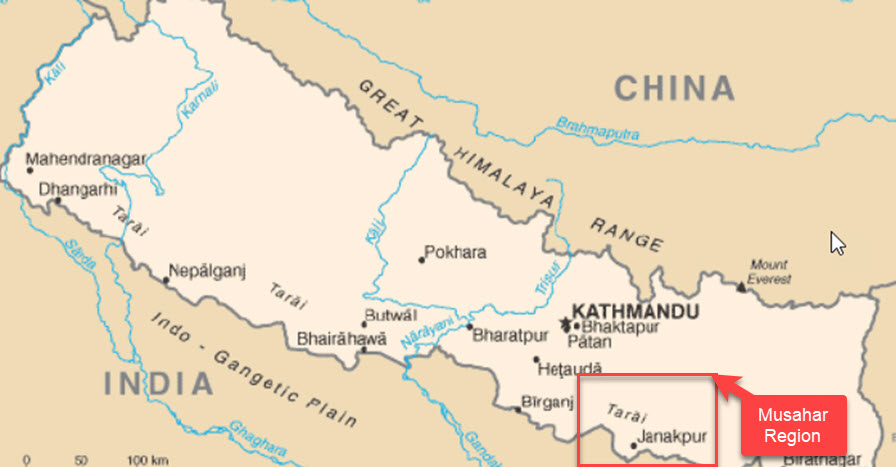Why focus on the Musahar Caste?The Musahar are an untouchable caste whose members live in the southern plains (Tarai) region of Nepal. The people of the Musahar caste are known as the Musurey and are a population of an estimated 240,000 individuals. Like many other untouchable communities in Nepal, the Musurey suffer greatly from severe poverty and a lack of education. Musurey women work 14 to 16 hours a day (as sharecroppers) in the landlord’s fields and are still unable to buy enough food or clothing for their children or to send them to school. The people who benefit from the Musurey's labor are local high-caste leaders. Musurey parents want to educate their children and give them a better future. However, grinding poverty means that children are forced to work from an early age to help support their families. Because of ongoing caste-based discrimination the Musurey have received little or no help from Nepal's government, or, indeed, the country's ruling class in general. Funds from abroad, combined with the dedicated efforts of some caring individuals, offer an opportunity for the Musurey to build a better life for themselves. Based on our travels to this area and our interactions with those that live there, we have found the Musurey to be warm hearted and welcoming. They are very generous, loyal, dependent, and tolerant. They speak a language that is not the predominate Nepali language spoken throughout Nepal. We have found that the U.S. Dollar goes a long way in this region of Napal. Labor is inexpensive and we can make major changes through relatively small investments. In future years, access to the area from Katmandu, the population and economic center of Nepal, will be changing. What is presently an arduous 8-hour trip will be reduced to 3 hours due to the construction of the "Fast Track". The new road is presently under construction and will provide new opportunities for travelers to access the area and for goods and services produced by the Musurey to reach larger markets both in Nepal and abroad. Reference Information on the MusaharThe Musahar are a Dalit community found in the eastern Gangetic plain and the Terai (a lowland region in northern India and southern Nepal that lies south of the outer foothills of the Himalayas.) ‘Musahar’ literally means 'rats-ridder' or ‘rat eater’ due to their main former occupation of catching rats, and there are many who are still forced to do this work due to destitution and poverty. The name is also thought to mean ‘mouse eater,’ again because of the diet some members of this community are forced to rely upon. It is thought that the Musahars are an offshoot of the hunter-gatherer Bhuiya tribe from the Chota Nagpur Plateau of India who migrated to the Gangetic plains approximately 300-350 years ago. The Musahar consists of three endogamous clans: Bhagat, Sakatiya and Turkahia. They are now mostly landless agricultural laborers and sometimes still have to resort to rat catching to survive during lean times. They are one of the most marginalized castes, even among Dalits. The Musahar are Hindu, and celebrate most local Hindu festivals, but also retain practices from their tribal origins. The Musahar in Nepal often have their own language, and many do not speak Nepalese. Many Nepali Musahars work as migrant laborers for 6 months at a time, and as a result many now have working knowledge of Hindi. Almost all Musahars live in rural areas, with a mere 3% living in the city. The Musahar literacy rate is 3% overall (estimated to be 20% in Nepal), and falls to an abysmal 1% among women. By some estimates, as many as 85% of some villages of Musahars suffer from malnutrition; and with little access to health care, diseases are prevalent. The 2011 Nepal census classifies the Musahar within the broader social group of Madheshi Dalit. At the time of the Nepali census of 2011, 234,490 people (0.9% of the population of Nepal) were Musahar. Map Of The Musahar Region
|